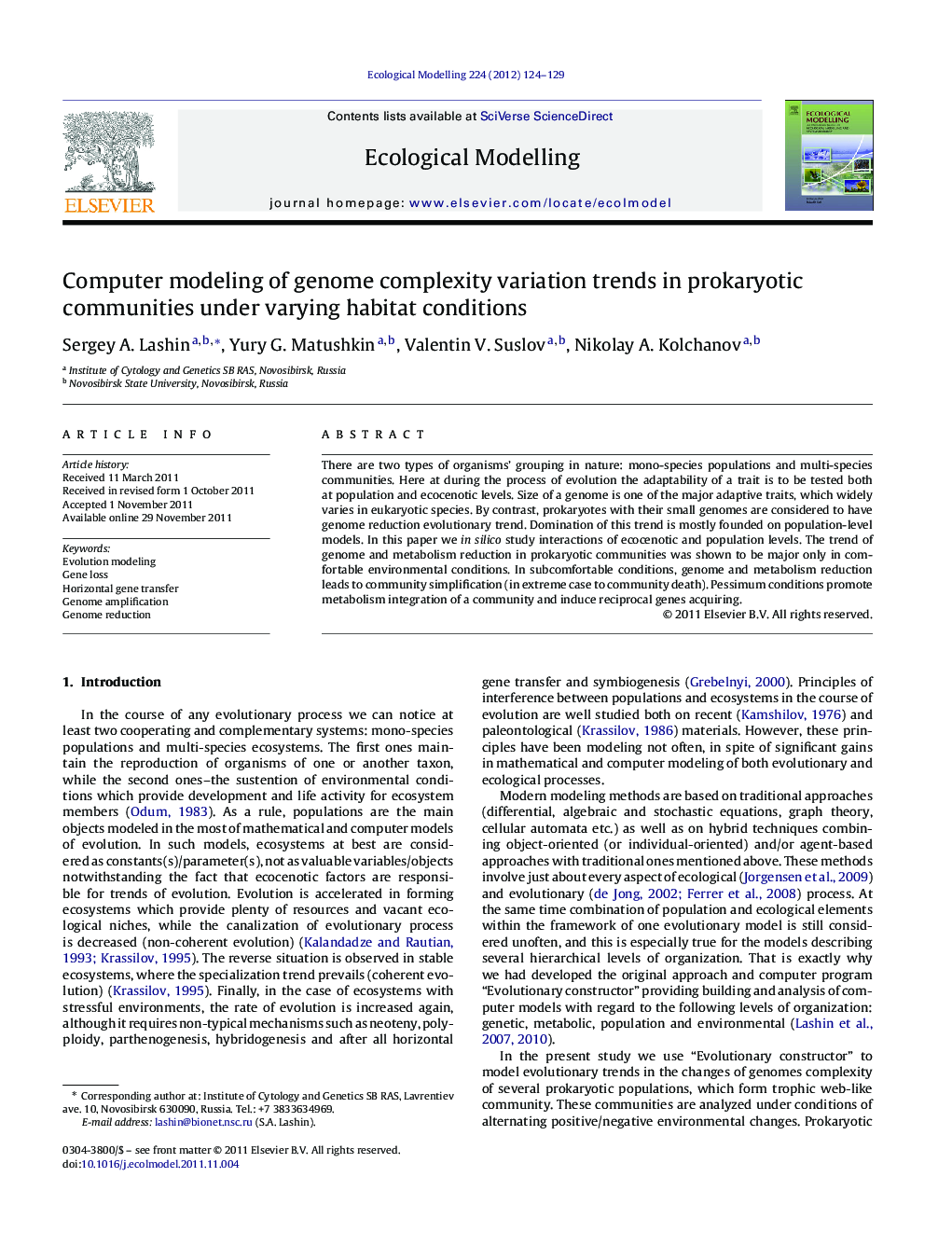| Article ID | Journal | Published Year | Pages | File Type |
|---|---|---|---|---|
| 4376642 | Ecological Modelling | 2012 | 6 Pages |
There are two types of organisms’ grouping in nature: mono-species populations and multi-species communities. Here at during the process of evolution the adaptability of a trait is to be tested both at population and ecocenotic levels. Size of a genome is one of the major adaptive traits, which widely varies in eukaryotic species. By contrast, prokaryotes with their small genomes are considered to have genome reduction evolutionary trend. Domination of this trend is mostly founded on population-level models. In this paper we in silico study interactions of ecocenotic and population levels. The trend of genome and metabolism reduction in prokaryotic communities was shown to be major only in comfortable environmental conditions. In subcomfortable conditions, genome and metabolism reduction leads to community simplification (in extreme case to community death). Pessimum conditions promote metabolism integration of a community and induce reciprocal genes acquiring.
► In this study we model the evolution and functioning of prokaryotic communities. ► We use Evolutionary Constructor software to create complex hierarchical models. ► We consider ecological, population, metabolic and genetic layers in our models. ► Evolutionary genome amplification/reduction are affected by ecological conditions.
